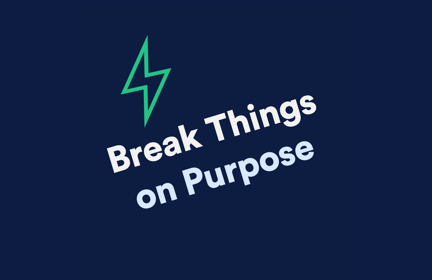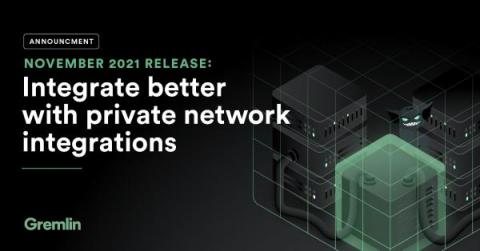Operations | Monitoring | ITSM | DevOps | Cloud
Chaos Engineering
Podcast: Break Things on Purpose | 2021 Year In Review
For this episode your hosts, Jason Yee and Julie Gunderson, are sitting down for a year in review! With the new year just around the corner, lets take a glance back at a year of chaos...engineering that is. The rest of the chaos we will leave out of the conversation. Julie and Jason talk about their favorite outages of the year. From Fastly to texts from Julie’s mom, we’ve definitely got a heck of a year to consider!
Reconnecting at AWS re:Invent 2021
AWS re:Invent 2021 was an especially unique event, as it was the industry’s first big in-person event since the start of the pandemic. After nearly two years of virtual events, being able to walk the expo halls in-person was an adjustment to say the least.
Podcast: Break Things on Purpose | Mandi Walls, DevOps Advocate at PagerDuty
Take a trip down memory lane with Mandi Walls, to chat about the many changes over the years in chaos engineering and other ares of tech. We’ve also got the new addition to Gremlin’s Developer Advocacy, Julie Gunderson who has joined Jason to chat with their mutual friend. Mandi talks about her previous work alongside Julie, but also the variegated nature of her background in operations and systems administration.
Getting started with Process Killer attacks
Modern applications come in a variety of forms–monoliths, microservices, serverless functions, and containers to name a few–but at the heart of all of these are processes. Processes are the fundamental unit of execution that we use to run programs, and although we need processes to run our applications, software engineers rarely think about them.
The Gremlin November 2021 release: Integrate better with private network integrations
We’re excited to announce the launch of private network integrations! This lets you use our existing Status Checks and Webhooks features on systems residing inside of your internal network, empowering any Gremlin team to automate Gremlin tasks safely and securely.
Podcast: Break Things on Purpose | Itiel Shwartz, CTO and Co-founder of Komodor
Welcome back to another iteration of “Build Things on Purpose” where we talk with developers and engineers who are creating tools that help us build more reliable systems. Today Itiel Shwartz, CTO and Co-Founder of Komodor, has joined us to chat about what they’re doing to help tame the chaos of Kubernetes. Itiel talks about Komodor’s goal of making troubleshooting Kubernetes not only easy, but potentially even fun!
How to run Status Checks within your private network using private network integrations
Podcast: Break Things on Purpose | Tomas Fedor, Head of Infrastructure at Productboard
Tomas Fedor, Head of Infrastructure at Productboard, is here to talk about his personal passions and professional perfections. Tomas takes us through some of his biggest adaptations he had to make when adopting the cloud. He also tackles the complexities of working through his POC process, and how to keep consistencies across various teams. Teams are a central focus for Tomas as well, and his techniques and experiences in growing and leading specific technical teams is insightful.
Getting started with IO attacks
Storage devices remain one of the most significant bottlenecks in modern systems. CPU and RAM speed seems to increase exponentially year over year, and although there have been large improvements in IO performance with solid state (SSD) and NVMe drives, moving data to and from persistent storage is still orders of magnitude slower than moving it to and from memory. In scalable cloud applications, this slowness can have a major impact on performance, latency, and the user experience.








